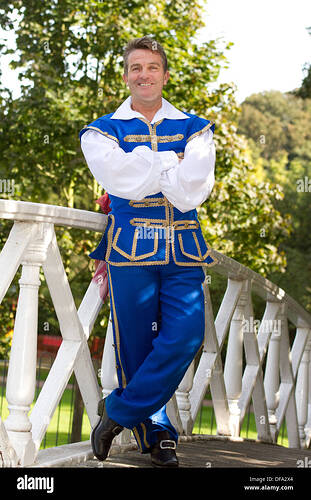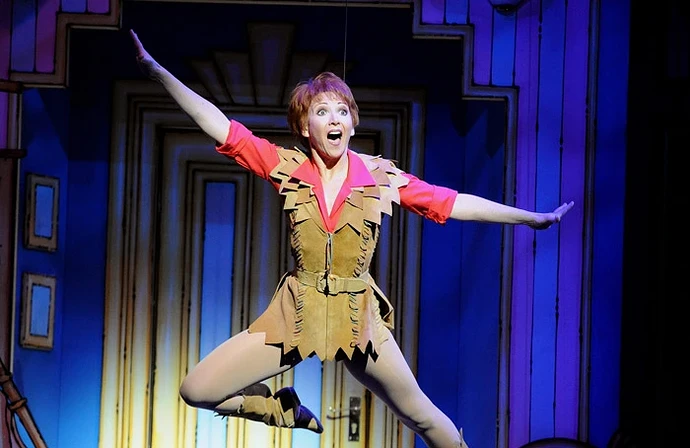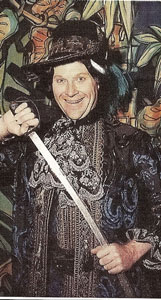Doctor Who is a uniquely British institution loved around the world.
Pantomime is a uniquely British institution which just bemuses everyone else.
I’ve loved both since I was little.
Every Christmas, my parents would take me to see the Wimbledon pantomime. I loved every second. The fairy tales, the comedy, the songs and dances, the magic. As I got older I became fascinated by the theatrical aspects - the stage design, the choreography, the ‘format’, the scripting, the in-jokes, the double entendres. I performed in pantos directed by me and written by friends at our church.
In later years, I haven’t been to as many (theatre costs the earth nowadays) but the love still remains.
But what is pantomime and why doesn’t anyone outside the UK understand its appeal.
Pantomime’s roots can be traced back to the comeia dell’arte from Italy - plays which usually involved characters called Harlequin and Columbine.
But British panto is rooted more in Victorian theatre traditions and through the early and mid 20th century developed into the format which still plays today in theatres around the country at Christmas time.
The traditional aspects involve an adaptation of a fairy tale (although this has stretched to other stories such as Peter Pan and Robin Hood).
The main character - Cinderella, Aladdin, Dick Whittington, Snow White, Peter Pan - is known as the Principal Girl or Boy and all those roles can be played by a ‘girl’. Love interests such as Prince Charming may also be played by a girl.
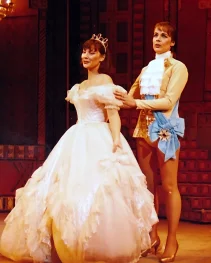
In the 21st century, though, it has become increasingly common for the Prince or male love interest, or even Aladdin or Dick or Peter Pan to be played by a man.

A hugely popular part of a pantomime is the Dame - a comedy role and usually a motherly role such as Aladdin’s mum, Widow Twankey. The Dame is always played by a man in a parade of elaborate costumes usually with a comedic twist. The UK has a number of famous Dames such as Christopher Biggins, John Inman and Sir Ian McKellen.
Every panto needs a villain for the hero to overcome. Whether it’s King Rat battling Dick Whittington or the Ugly Sisters stopping Cinderella from attending the ball, everyone loves to boo and hiss and bad guy.
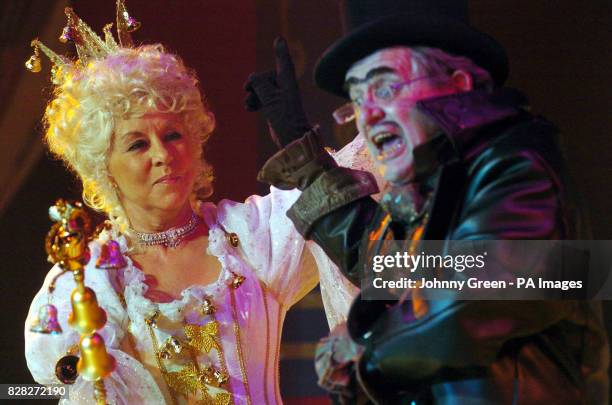
Many pantos often have a comedy sidekick - Buttons to Cinderella, Wishee Washee to Aladdin or Simple Simon in Jack and Beanstalk. These characters will often be involved in a lot of audience participation encouraging the audience to join in with catchphrases like ‘oh no it isn’t’ or singing songs between scenes.
Different pantomimes have smatterings of other characters - a father figure, villain’s henchmen, various animals such as cows and cats. Songs and dances are often based around appropriate musical numbers, popular pop songs or old favourites. Sweets are thrown into the audience, children come up on stage, every joins in a singalong; there are puffs of smoke, special effects, music and a lot of laughter.
As you can see from the photos, lots of Doctor Who stars, past and present, have appeared in pantomime - with some being extremely well-verse in it such as John Barrowman, Bradley Walsh and the incomparable Bonnie Langford.
So why did fans use ‘pantomime’ as a term of derision during JNT’s era?
Sadly it’s because, certainly during the 80s and 90s, pantomime was seen as the place where hasbeen actors plied their trade. It was full of the sort of comedians who wouldn’t be getting a television special any time soon, forgotten actors and actresses who may have dominated light entertainment in the 70s and early 80s but were slowly falling out of fashion. It was seen as a bit cheap and a bit tacky and very, very cheesy - how very JNT. And we know he was a fan of them with his famous Doctor Who panto which he put on while producer of the show featuring stars such as Nicola Bryant, Mary Tamm and Anthony Ainley.
Fans with limited imaginations saw those elements in Doctor Who, and the association with JNT, and so the insult arose.
The fact is that pantomime, done properly, is an extremely hard job and putting on a good panto takes a lot of talent and skill. If anything comparing Doctor Who to pantomime should be seen as a good thing.
It sometimes confuses me a little that pantomime confuses non-Brits. At the end of the day it’s a comedy musical play based on a well-known fairy tale performed, usually, around Christmas time. It’s not the trickiest of concepts to get your head around… ![]()
And my favourite Doctor Who-related panto fact? I once saw Colin Baker the villain, Bluebeard the Pirate in a panto production of Robinson Crusoe at Wimbledon. At one point he kidnapped the principal girl from the deck of the ship. And how did he escape?
By TARDIS of course.

